How to Hide Speaker Wire: (6 Methods for a Cleaner Look)

So you’ve got your new sound system, but those unsightly speaker wires are cramping your style. Nobody likes clutter – especially from something as enjoyable as our home audio systems.
Key Takeaways: There Are 6 Easy Methods to Hide Your Speaker Wires.
- Method 1: In-Wall Installation
- Method 2: Baseboard and Crown Molding
- Method 3: Cable Raceways
- Method 4: Under Carpet Flat Wire
- Method 5: Floor Cord Covers
- Method 6: Cable Sleeves
This article will delve into different methods of concealing speaker wires. We’ll explore everything from in-wall installation to embedding them in baseboards or walls. Trust me; by the time we’re done, you’ll be a pro at keeping the focus on your sleek speakers and not on a jumble of cables.
Are you ready? Let’s do this!
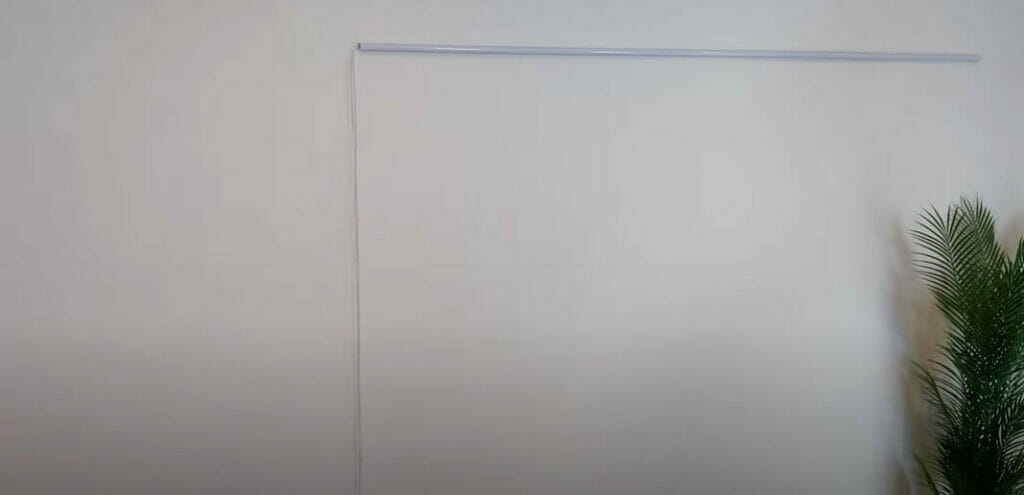
Tools and Materials Needed
Before diving into the steps to hide speaker wires, let’s gather all the necessary tools and materials. Without these essentials, you’ll find it pretty hard to get started.
- Stud Finder: Essential for locating studs in the wall for the in-wall installation method.
- Drill: Used for making holes in the wall, especially for in-wall installations.
- Fish Tape: A tool to help route wires through tight spaces, especially within walls.
- Paint: To touch up walls after any in-wall installations or modifications.
- Pry Bar or Flat Tool: Useful for removing baseboards or crown molding without damaging them.
- Nails or Fasteners: Required to reattach baseboards or moldings once wires are hidden behind them.
- Measuring Tape: To measure the length of the wire or the distance it needs to be run and to cut the cable raceways or covers to the right size.
- Snips or Scissors: For cutting the cable raceways to the desired length.
- Adhesive (or double-sided tape): Secure certain wire concealment solutions like cable raceways or flat speaker wires to walls.
- Tape or Wire Clips: Secure flat speaker wires underneath carpets or rugs.
- Cable Sleeves: Sleeves are designed to bundle wires together neatly.
Additionally, some materials used across the methods are:
- Speaker Wire: The main object we’re looking to conceal.
- Cable Raceways: Plastic channels to hide and route wires along walls or ceilings.
- Flat Speaker Wire: A speaker wire designed to be less obtrusive and can be painted over or concealed more easily.
- Floor Cord Covers: Protective channels are laid on the floor to cover and protect wires.
- Cable Sleeves: Materials like fabric or plastic that wrap around a bundle of wires to keep them organized and concealed.
Methods to Hide Speaker Wires
When maintaining a clean, uncluttered entertainment space, hiding speaker wires can be challenging. But I’m here to tell you it doesn’t have to be! There are several clever and practical methods you can utilize.
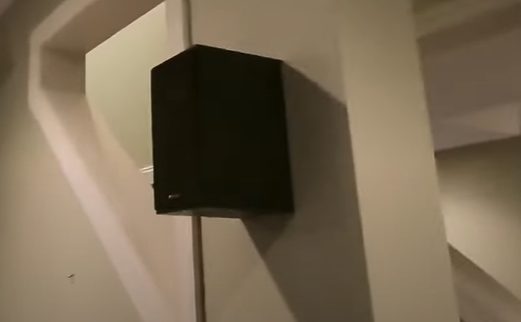
Method 1: In-Wall Installation
This method provides the cleanest look, as all wire traces disappear completely.
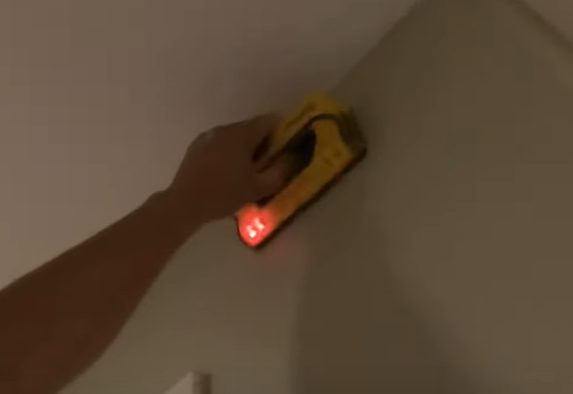
Step 1: First Things First
- Grab that stud finder of yours! You need to know where those studs are. No going in blind!

Step 2: Ready, Set, Drill!
- Drill a hole where you’re starting and where you’re ending. Neat and clean.

Step 3: Fish It Out
- Get that fish tape, attach your wire, and reel it like you’re catching the big one!

Step 4: Finish Strong
- Install your speaker to the wires in the walls and test it out.

Method 2: Baseboard and Crown Molding
These architectural elements not only enhance the aesthetic appeal of your room but also provide an excellent conduit for your speaker wires.

Step 1: Pry Time
- Gently remove that molding. It’ll be worth it, trust me!
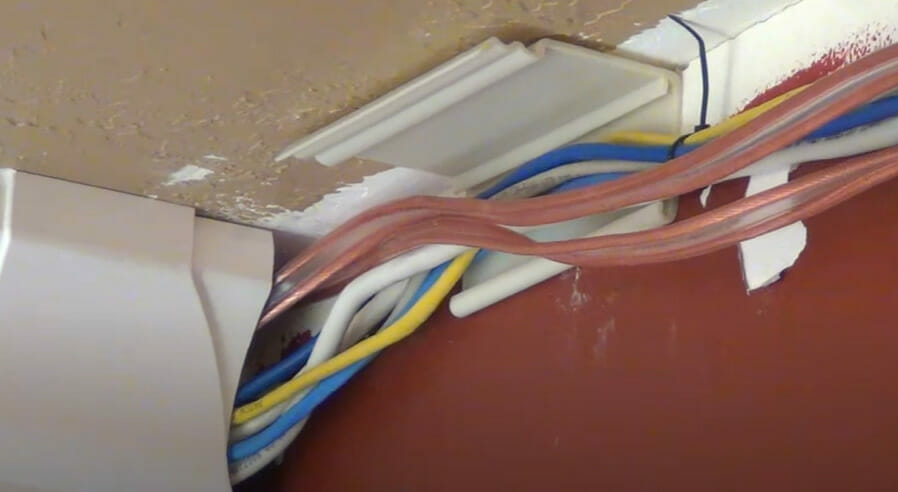
Step 2: Sneak the Wires
- Slide the wire behind. Out of sight, out of mind!
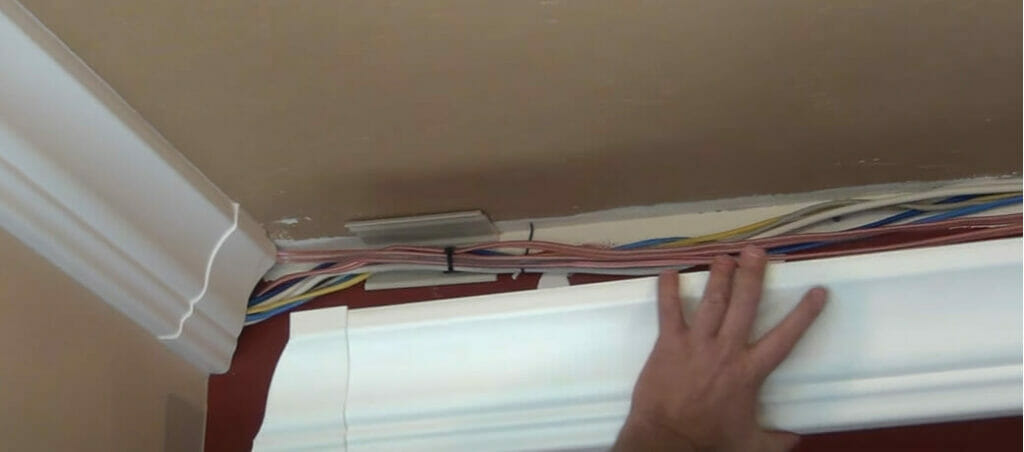
Step 3: Nail It Down
- Reattach the molding. And boom – another job well done!
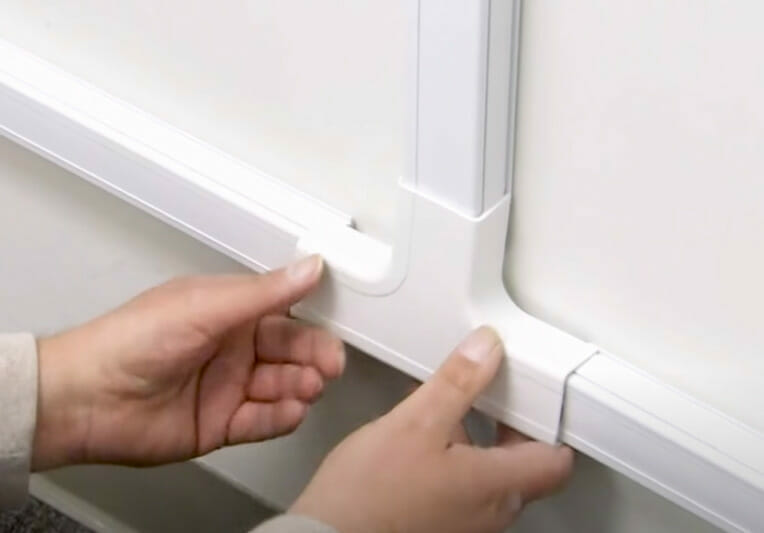
Method 3: Cable Raceways
These plastic channels keep your wires neatly bundled together. You can then mount these raceways along your walls or ceiling.
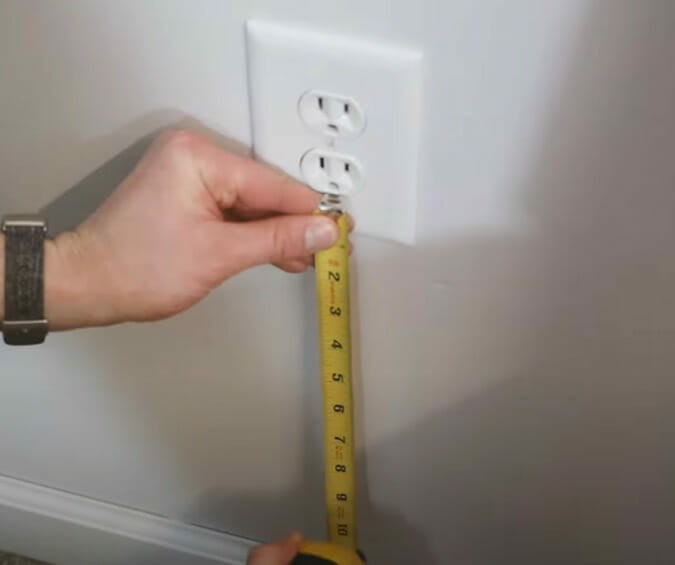
Step 1: Measure Twice, Cut Once
You know the drill. Measure that wire and snip the channel to fit.
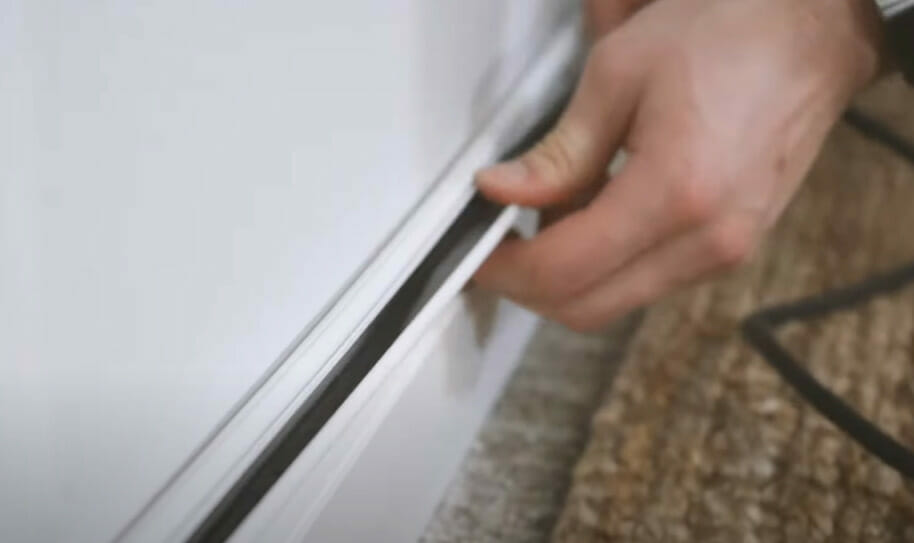
Step 2: All Aboard
Tuck that wire neatly into the raceway. No messy wires here!
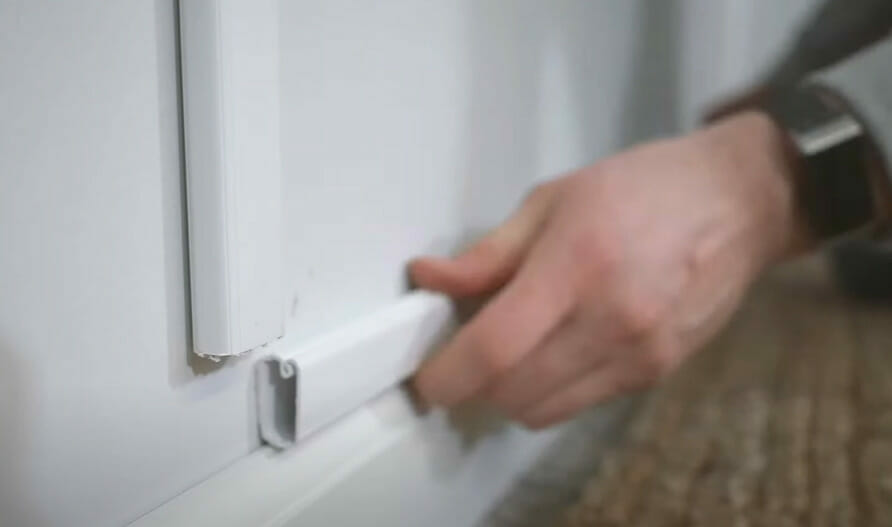
Step 3: Stick them Up
- Adhere those channels right to the wall. Easy peasy!
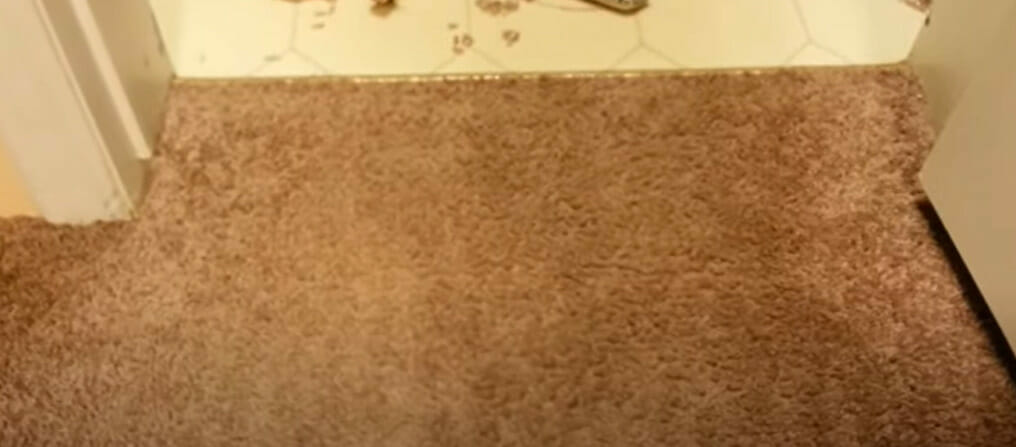
Method 4: Under Carpet Flat Wire
Laying flat speaker wire under carpets is another handy method when wall installation isn’t an option.
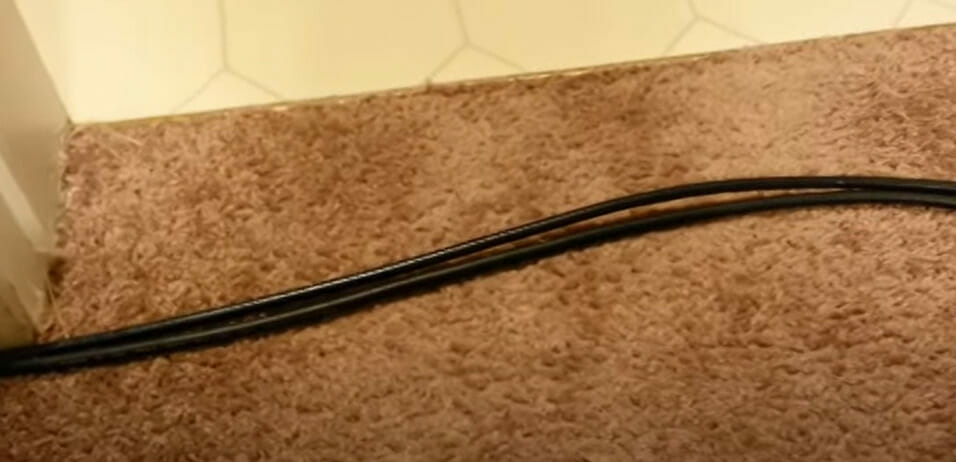
Step 1: Identify the Path
- Decide on the best path for the wire to run. This should be in an area with the least foot traffic to reduce wear and tear on the carpet and the wire.
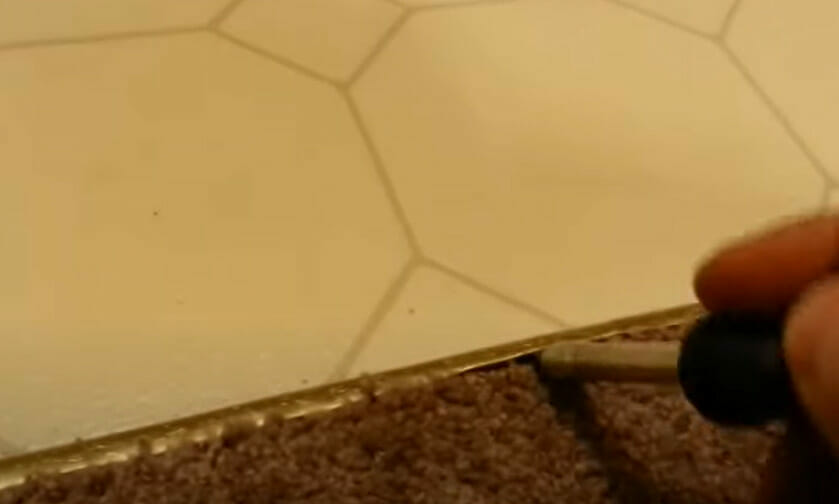
Step 2: Lift the Carpet Edge
- Start at one end where you want the wire to begin. Gently lift the edge of the carpet. If there’s a carpet pad underneath, you’ll need to lift that as well.
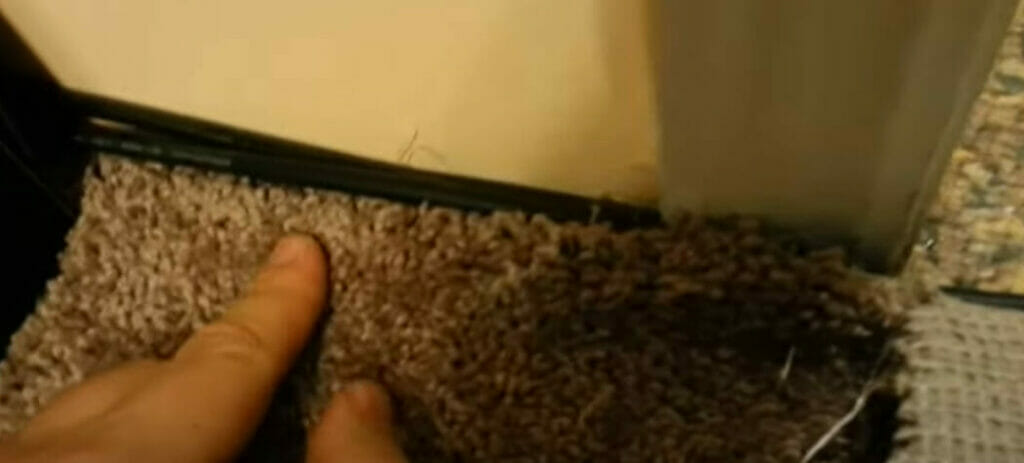
Step 3: Lay the Flat Wire
Place the flat wire on the floor, ensuring it’s straight and free from kinks.
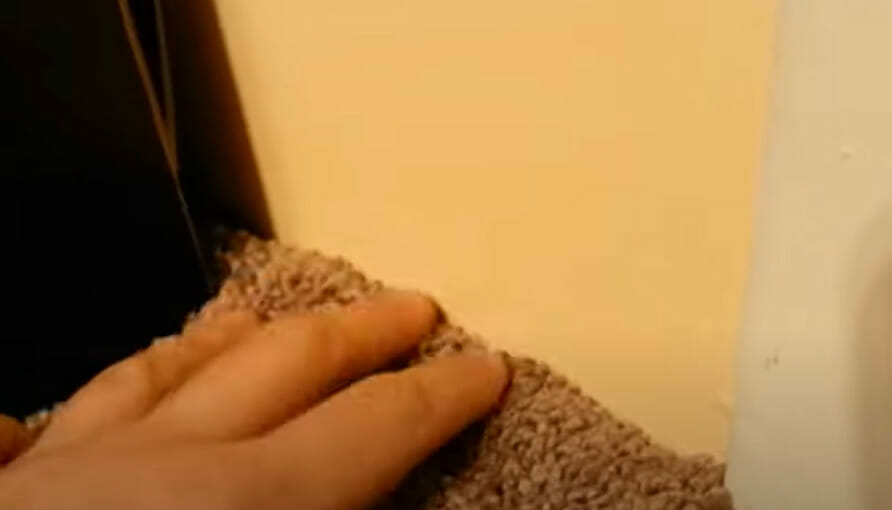
Step 4: Replace the Carpet
Carefully lay the carpet (and pad, if you lifted it) back over the wire. Make sure it lays flat without any bulges.
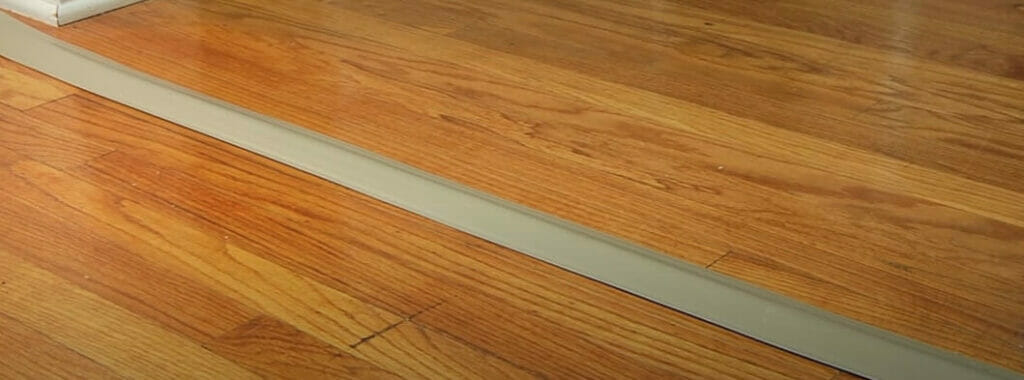
Method 5: Floor Cord Covers
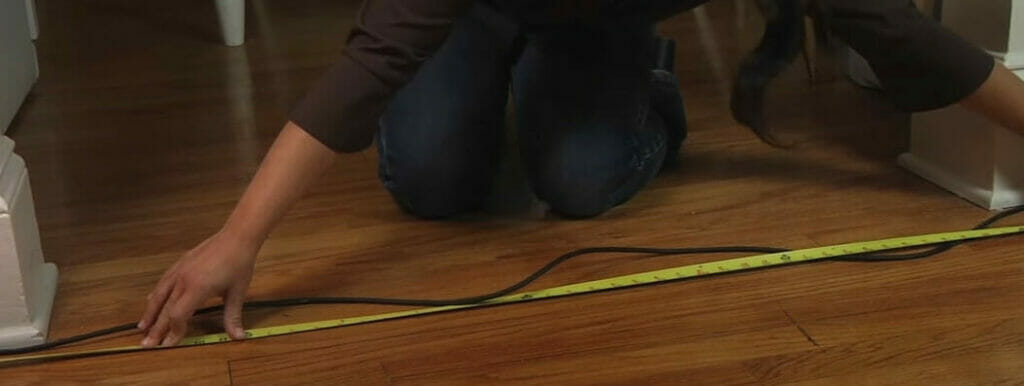
Step 1: Measure and Plan
- Measure the distance between the points you need the speaker wire to run. This will determine the length of cord cover you’ll need.
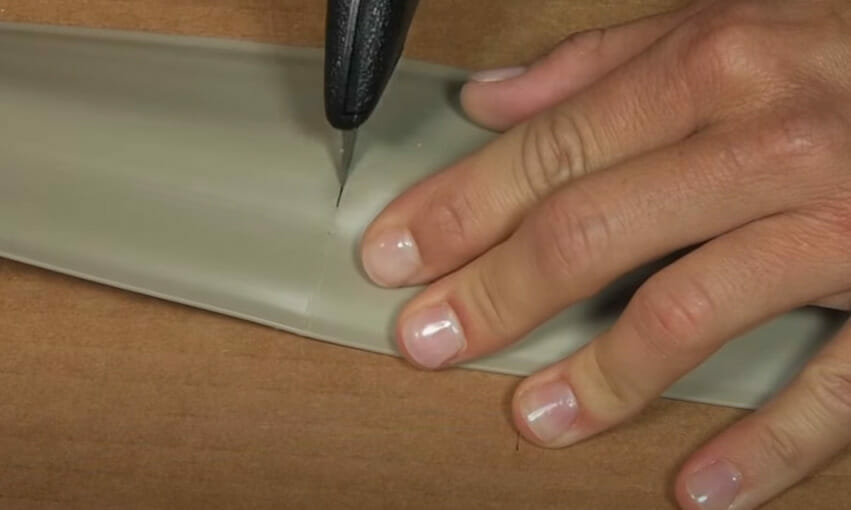
Step 2: Preparing the Speaker Wire
- Measure, cut, and strip the speaker wire as necessary. Before placing it in the cord cover, ensure it comfortably reaches the amplifier and speaker.
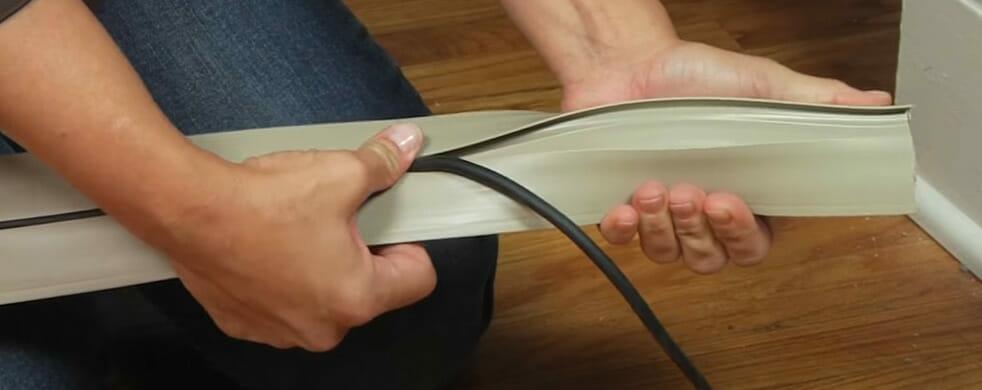
Step 3: Laying the Cord Covers
- Open the cord cover (some models have a slit on one side) and place your speaker wire inside.
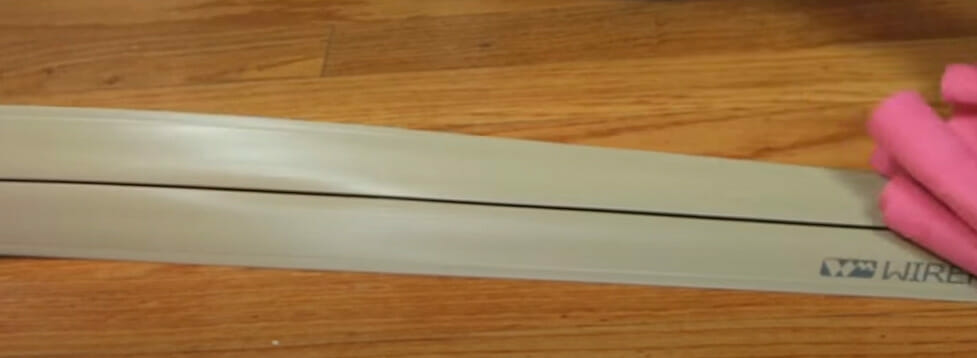
- Lay the cord cover along the planned route. Ensure it sits flat on the floor with no bumps or kinks.
Step 4: Securing the Cord Covers
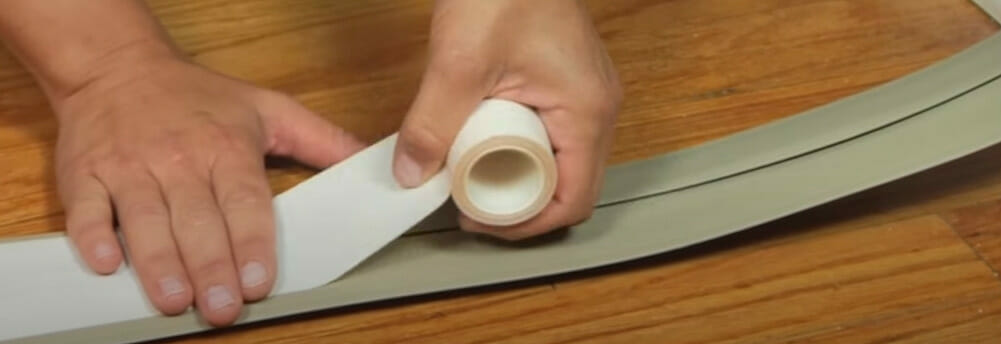
- Some cord covers come with adhesive bottoms to secure them to the floor.

- Remove the backing and press firmly.
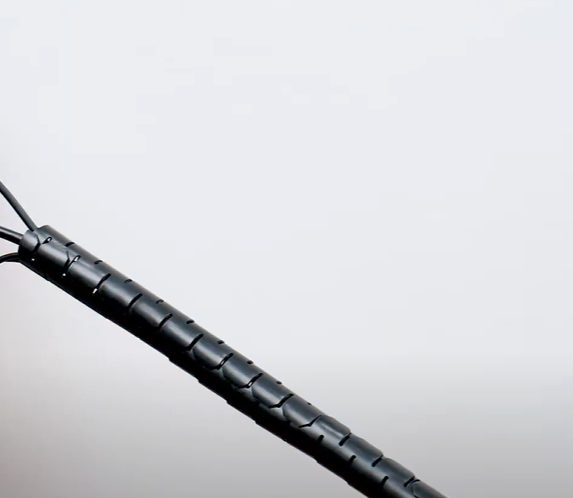
Method 6: Cable Sleeves
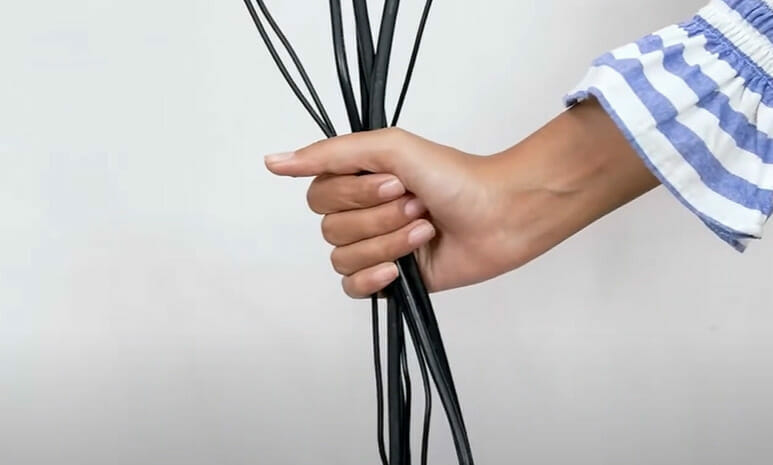
Step 1: Bundle Up
Wrap those wires up like a burrito in a cable sleeve.
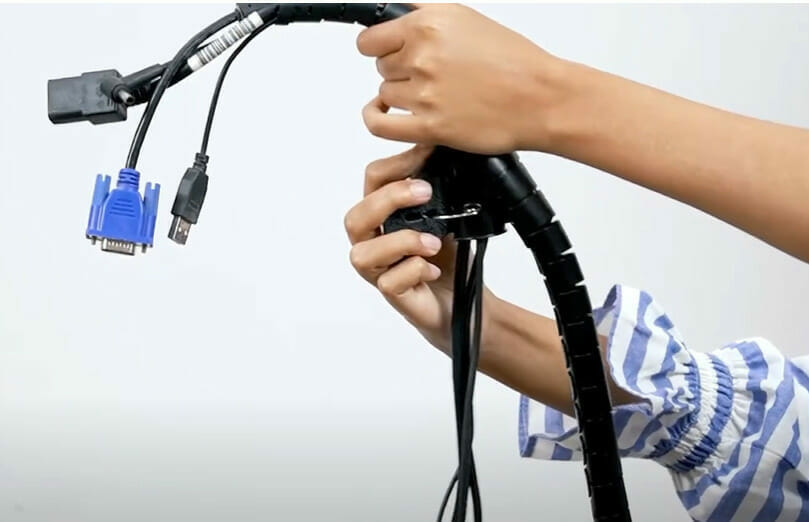
Step 2: Slide and Hide
- Once bundled, these can be easily slid behind furniture or along walls.
Here’s a concise overview of various methods to conceal speaker wires, highlighting the advantages and disadvantages of each:
| Methods | Advantages | Disadvantages |
| In-Wall Installation | – Completely invisible wires – Most professional appearance – Increases home value | – Requires drilling and potentially patching – Can be complex for DIY beginners – Permanent; not suitable for renters |
| Baseboard and Crown Molding | – Utilizes existing room features – More accessible than in-wall installation – Can be reversed relatively easily | – It may require prying off and reattaching moldings – Limited to the path of the moldings |
| Cable Raceways | – Quick and easy to install – Can be painted to match the wall color – Removable and adjustable | – May not be as seamless as other methods – Adhesives can damage wall paint |
| Under Carpet Flat Wire | – Invisible unless you lift the carpet – Does not require drilling or wall modifications | – Potential tripping hazard – Wires may wear out faster due to foot traffic |
| Floor Cord Covers | – Provides a physical protective barrier – Easily movable and adjustable | – It can be a tripping hazard – Not the most aesthetically pleasing option |
| Cable Sleeves | – Bundles multiple wires together – Available in various materials and designs | – Still requires a hiding place (e.g., behind furniture) – It can become bulky with too many wires |
Safety Precautions
Handling speaker wires might seem simple, but it’s crucial to remember the importance of safety. I’ll share some key guidelines to help you keep things in shape.
| Maintenance and Safety Precautions | Guidelines and Information |
|---|---|
| Overloading Circuits | – It’s easy to get carried away with multiple devices connected simultaneously, but this could lead to overheating or even fires. – Stick to the manufacturer’s instructions about power ratings and loads. |
| Wire Insulation | – Ensure your wires are properly insulated. This prevents electrical shocks and reduces the risk of wire damage. – If you’re running wires through walls or ceilings, ensure they’re rated for in-wall use. |
| Placement Precautions | – Avoid high-traffic areas where wires can be tripped over. – Avoid heat sources such as radiators or stoves. – Avoid Wet areas like bathrooms or kitchens where there is a risk of electrocution from water spillage. |
| Safety First | – Make sure everything’s switched off before you start cutting or stripping wires |
| Avoid Tangles & Knots | – Tangled wires can lead to degradation in sound quality and increase the risk of wear. Keep wires organized. |
| Cable Management Tools | – Utilize tools like cable ties, clips, and sleeves to maintain organization and reduce wear and tear. |
| Regular Cleaning | – Dust and dirt can accumulate over time. Clean wire covers, conduits, and the surrounding areas periodically. |
| Periodic Replacement | – Wires degrade over time. Periodically inspect and replace older wires to maintain sound quality and safety standards. |
| Regular Checks for Maintenance | – Look out for frayed ends or exposed wiring; these need immediate attention. – Check if any cables have been bent excessively; this may affect signal quality. – Verify if all connections are tight, as loose ones can cause static noise. |
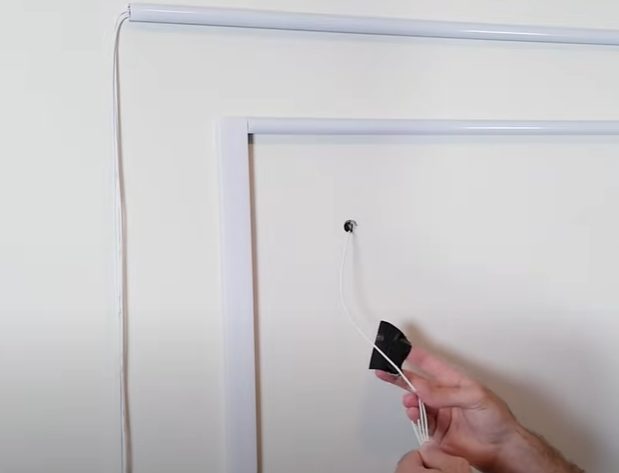
Safety Benefits of Concealing Wires
It’s more than just an eyesore; it’s a potential safety hazard. Hiding those speaker wires isn’t only for aesthetic purposes; it also has significant safety benefits.
| Aspect | Description |
|---|---|
| Tripping Hazards | – Speaker wires strewn haphazardly across floors pose a serious risk of tripping and falling. – This risk increases if you have young kids or elderly folks moving around the house who might not see these small but potentially dangerous obstacles. |
| Electric Shock Risks | – While most speaker wires are low voltage, there’s always an inherent risk when dealing with electricity around the house. – Uncovered wiring can become frayed or damaged over time, increasing the likelihood of electric shocks upon contact – something we want to avoid! |
| Pets’ Safety | – Pets love to chew on things they shouldn’t be chewing on, like…you guessed it..wires! – Keeping them hidden will protect your pets from accidental ingestion or electrical shocks while keeping your sound system safe from damage. |
| Fire Hazards | – Frayed or exposed wiring poses another serious threat as it could potentially spark and ignite nearby materials, leading to catastrophic results in some instances. |
| Wire Lifespan | – Remember that hiding those pesky cables can also prolong their lifespan by protecting them from wear and tear due to foot traffic or vacuum cleaners running over them constantly. |
Troubleshooting Tips
| Problem | Description | Solution |
| Problem with Adhesive Wire Covers | Adhesive not sticking to the wall. | – Clean the surface thoroughly with alcohol wipes or a damp cloth – Ensure the wall is dry before application. If the adhesive still doesn’t stick, consider using additional double-sided tape or wall-friendly adhesive strips. |
| In-Wall Installation Difficulties | Difficulty feeding wire through the wall. | – Use a fish tape or a straightened coat hanger to help guide the wire through. – Ensure there are no obstructions within the wall. |
| Baseboard and Crown Molding | Molding won’t sit flush due to the wire. | – Consider using a small tool or chisel to create a shallow channel at the back of the molding to accommodate the wire. |
| Cable Raceways | The raceway fell off the wall. | – Ensure the wall surface is clean and dry. Use stronger adhesive strips. – Consider screwing the raceway into the wall for a more secure fit. |
| Under Carpet Flat Wire | Wire is creating a noticeable bump under the carpet. | – Use a carpet tucker tool or a flat-edged tool to press and tuck the wire more effectively under the carpet. Ensure the wire is as flat as possible. |
| Floor Cord Covers | Covers shift or move when walked upon. | – Secure the covers using a non-residue tape or consider adhesive-backed floor covers for a more permanent solution. |
| Cable Sleeves | Wires slipping out from the sleeves. | – Ensure the sleeve is tightly wrapped and secured at both ends. – Some sleeves come with Velcro or zips to ensure they remain closed. |
| General Sound Issues | Sound quality is compromised after hiding wires. | – Check all connections to ensure they’re tight and correct. – Inspect the wire for any damage or pinching which could affect audio quality. |
| Safety Concerns | The wires are getting hot. | – Turn off the system immediately and consult with an expert. Ensure you’re not overloading any circuits. |
Frequently Asked Questions
- Can I run speaker wires outside my house for outdoor speakers?
- Yes, but ensure you use outdoor-rated speaker wires to withstand weather conditions.
- Are there wireless solutions to avoid using speaker wires altogether?
- Absolutely! Wireless speaker systems that use Bluetooth or Wi-Fi to transmit audio signals are available, eliminating the need for physical wires.
- How long can speaker wires be without losing audio quality?
- For most home systems, lengths up to 50 feet will have negligible loss. However, consider using thicker gauge wires for longer runs to ensure minimal signal degradation.
- Can I hide speaker wires behind decorative elements like posters or curtains?
- Yes, curtains, posters, or other wall decorations can effectively camouflage speaker wires. Ensure the wires are secured so they don’t dangle or become a hazard.
- What’s the easiest method for a temporary setup, like for a party or event?
- Using floor cord covers or cable sleeves is a quick and easy solution for temporary setups. They’re easy to install and remove without causing any damage.
- How can I determine the right gauge of speaker wire for my setup?
- The choice depends on the distance between your amplifier and speakers. Short distances (under 50 feet) typically use 16-gauge wire. A thicker wire, like 14 or 12-gauge, is advisable for longer distances.
- Can I bury speaker wires in my garden for an outdoor setup?
- Yes, but ensure you use direct burial speaker wire designed to be underground. It’s also advisable to encase the wire in a conduit for extra protection.
References
Website Resources:
- Crutchfield. https://www.crutchfield.com/
- Audioholics. https://www.audioholics.com/
Video Resources:
Chris Maher
tidyDSK
Legrand, North America
CableWholesale.com
Echogear
RacewayCrown
Dreamedia Installs
